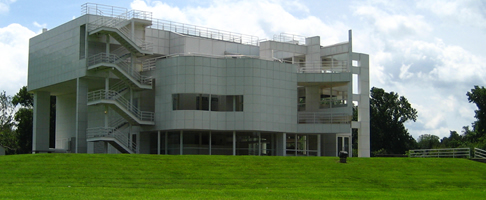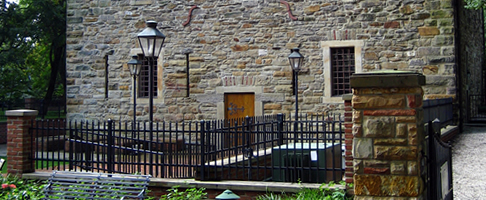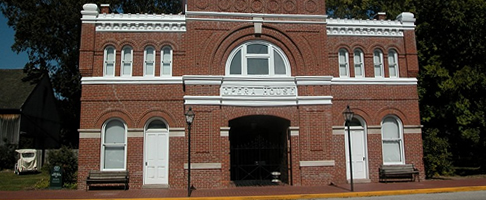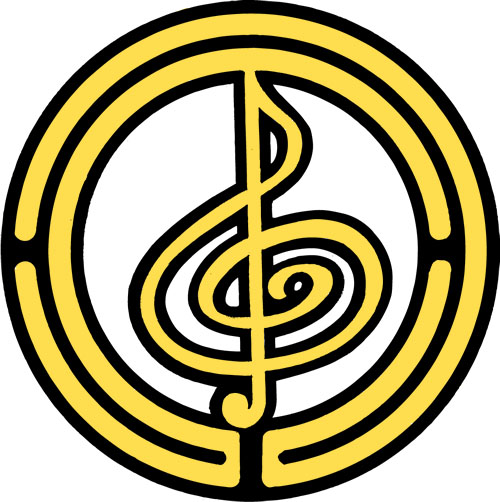

The Meier Atheneum
The Atheneum was designed by internationally-known architect Richard Meier. He viewed it as a point of arrival and oriented it towards the riverbank of the Wabash, symbolizing New Harmony’s beginning, as both Harmony Society and Owen-Maclure community members came to the area by boat. To emphasize its function as a public building all spaces not necessarily enclosed, such as the theater, are visible. The glass walls add to the feeling of openness. The large windows are used to frame selected views of the town, relating to the information given to visitors. In its formal structure the Atheneum recalls the 1920s work of French architect Le Corbusier (1887-1965) of the “International Style” school, by its use of ramps, glass walls, columns and graceful curving lines. Meier expanded and manipulated the Modernist architectural vocabulary and evolved out of it a highly personalized style. Planes, columns, and projections are assembled in a complex arrangement. As in his earlier works, square white porcelain steel-backed panels coat the exterior in a grid-like pattern. READ MORE
 Rapp Granary – David Dale Owen Laboratory
Rapp Granary – David Dale Owen Laboratory
The massive sandstone, brick and wood structure, often referred to as a Fort Granary, was built by German immigrants at a time when Indiana gained statehood. It represents a rare rural architectural structure from the early 1800s–the largest granary of its type built by German craftsmen in the United States. It is located in the National Historic Landmark district in the Rapp-Maclure Owen Block of New Harmony, IN. It is owned by the Rapp Granary-Owen Foundation, a 501(C)(3) organization, established to acquire, refurbish, maintain, and operate the historic building. It operates as a multi-purpose conference center and is open for tours when not otherwise scheduled. READ MORE
 The Thralls’ Opera House
The Thralls’ Opera House
Thrall’s Opera House
Formerly known as Rooming House 4, this building originally served as a community house for the single men in Father George Rapp’s communal society. After the Harmonists sold New Harmony to Robert Owen, it became a community building where lectures, dances, and other social activities were held. It became known as the Union Hall in 1859 when it was purchased by the Dramatic Association and became the second largest theater and ballroom in Indiana. READ MORE
New Harmony Artists Guild House
Built as a single family dwelling, The “Guild House” as it is known today houses out parent organization: The New Harmony Artists Guild. This venue serves as a musical oasis where local musicians can hang-out, practice, socialize and just generally feel like they have a place to go to commune with the muses. The Artists Guild hosts a regular concert series each year in addition to serving as one of the NHMF&S performance and teaching venues.
 The Macleod Barn Abbey
The Macleod Barn Abbey
This simply furnished facility features a large gathering room with fireplace that can seat up to 50 people. It houses a full kitchen, large dining room, and two floors of bedrooms accommodating 29 guests. The Abbey is “home” for the students and faculty, serving as classroom, dancehall, dining room and crash pad. The Abbey looks out upon one of the most scenic wetlands in all of Southern, Indiana, along the banks of the mighty Wabash River.

